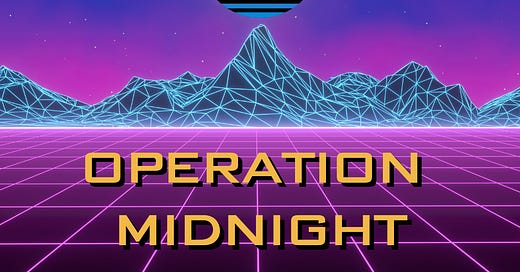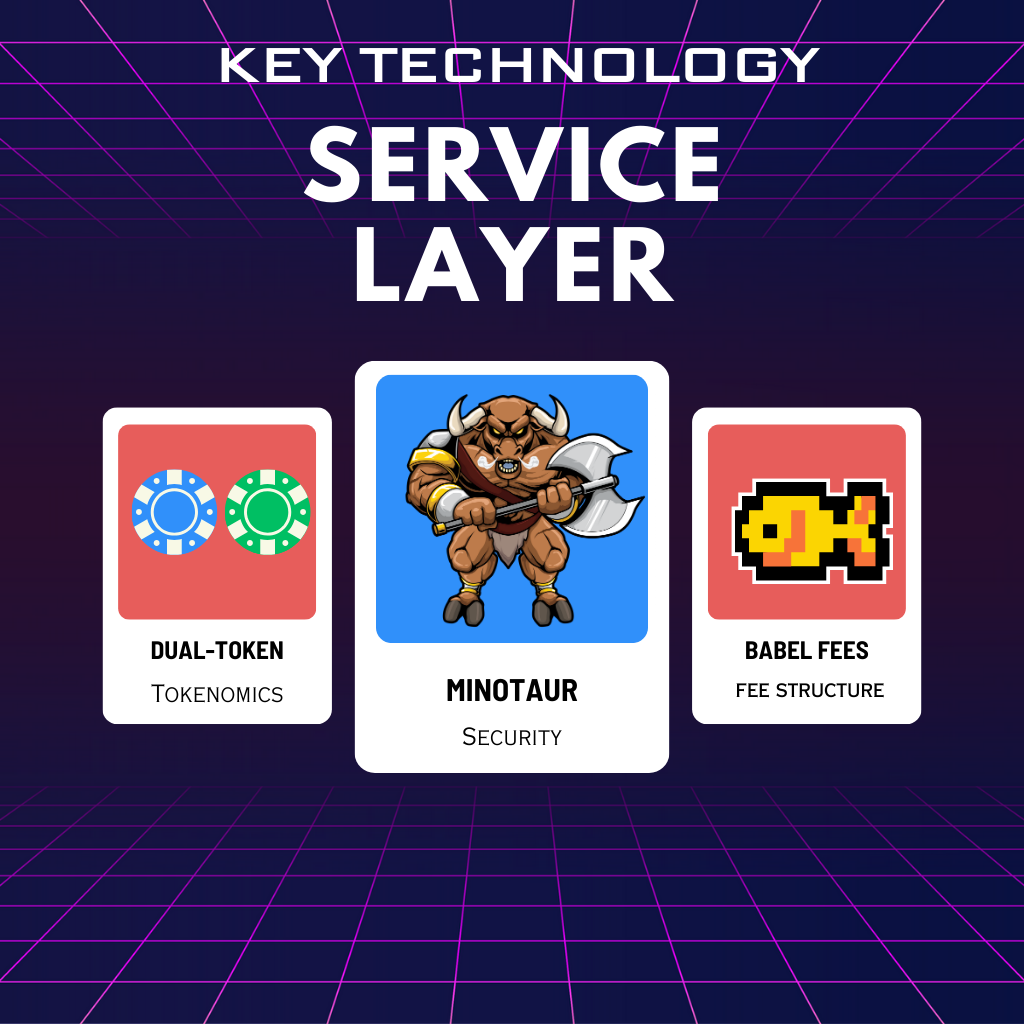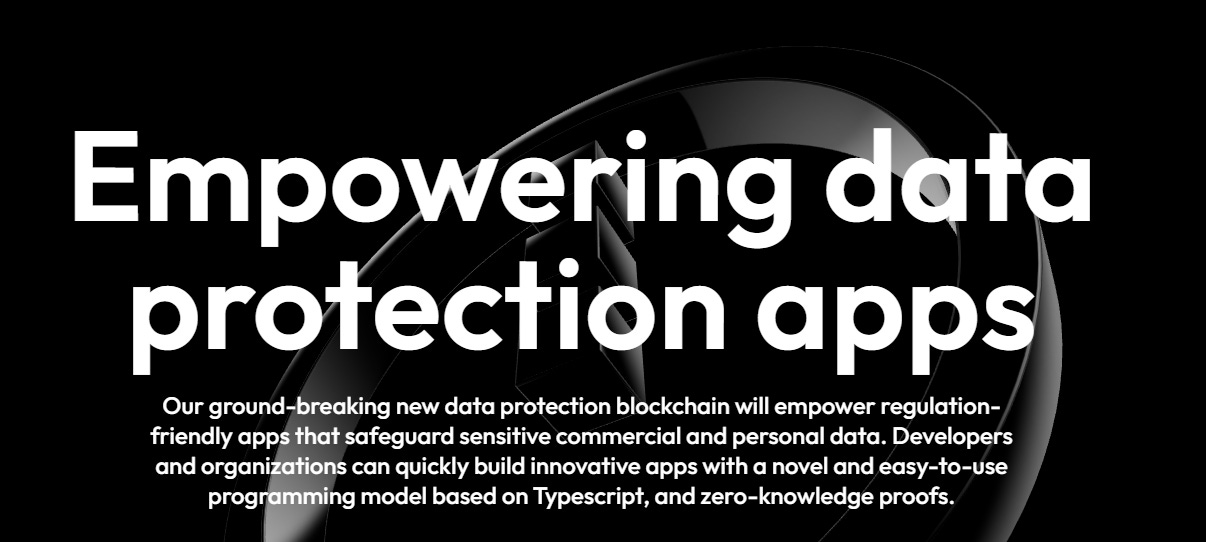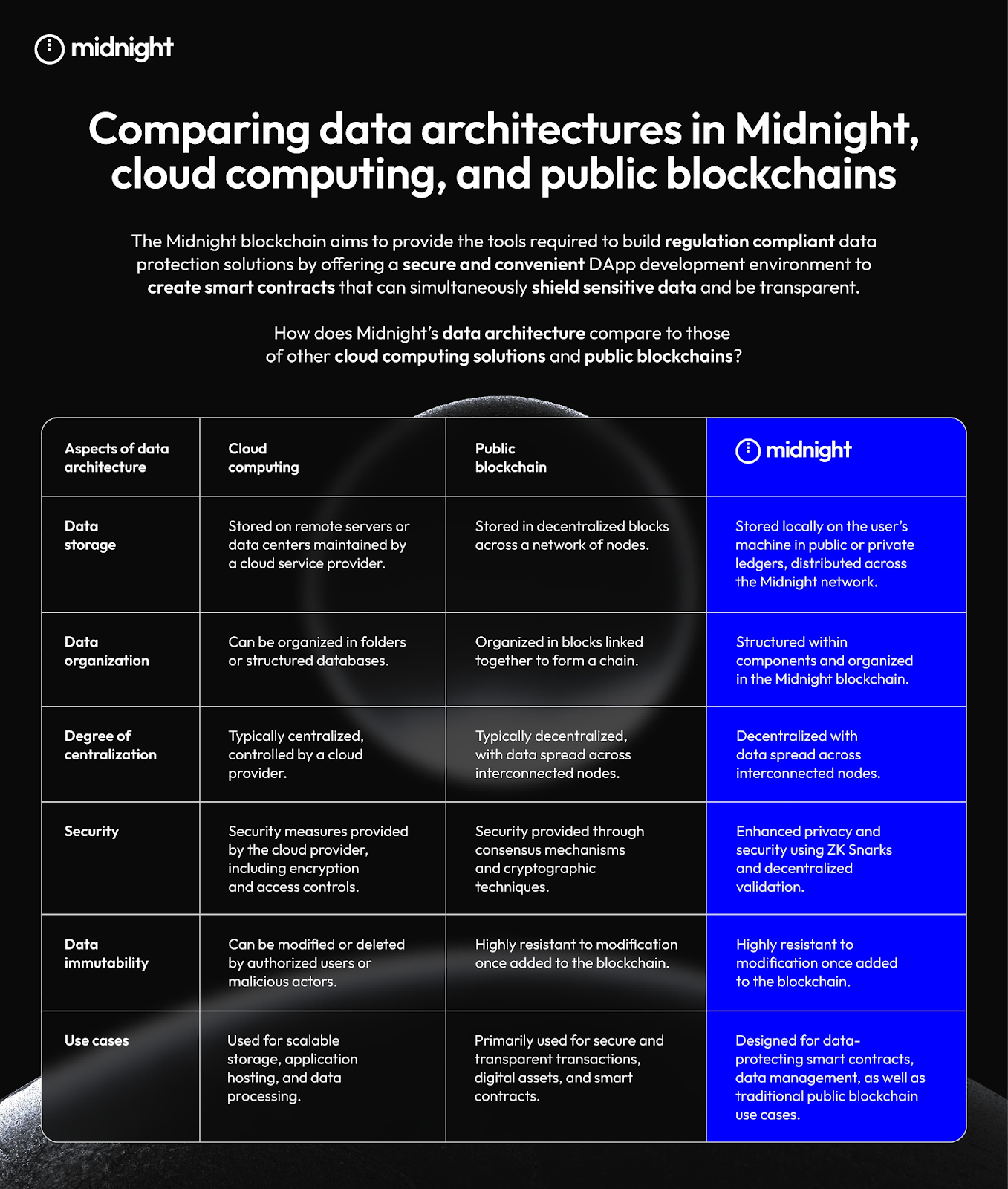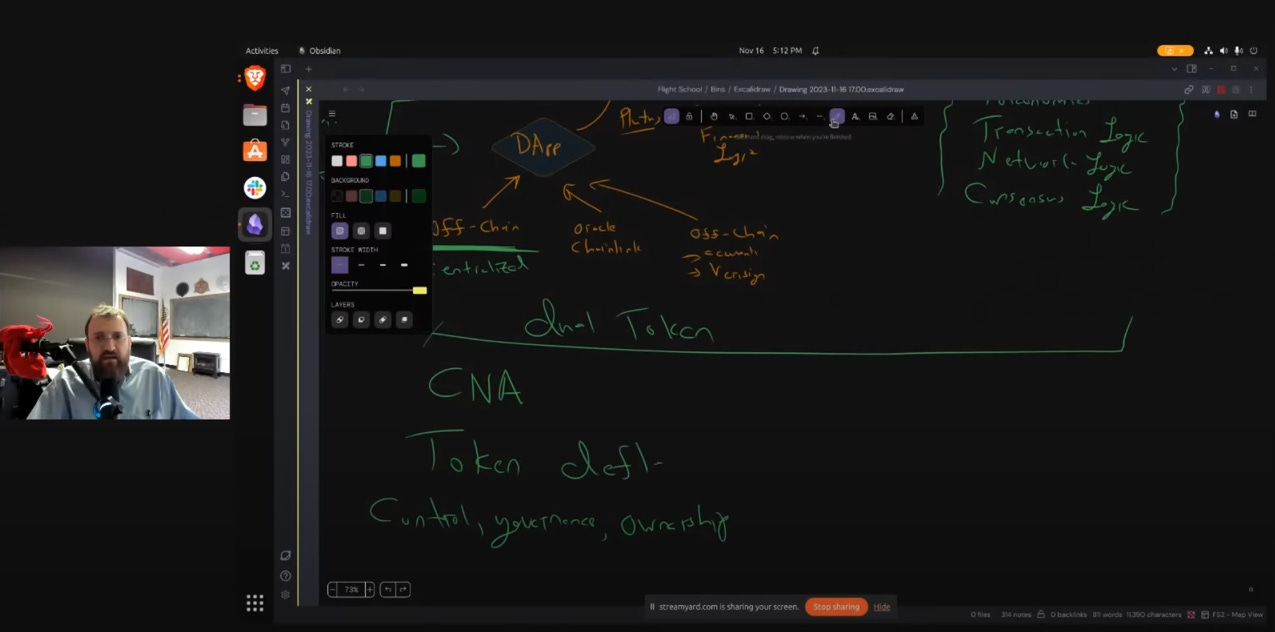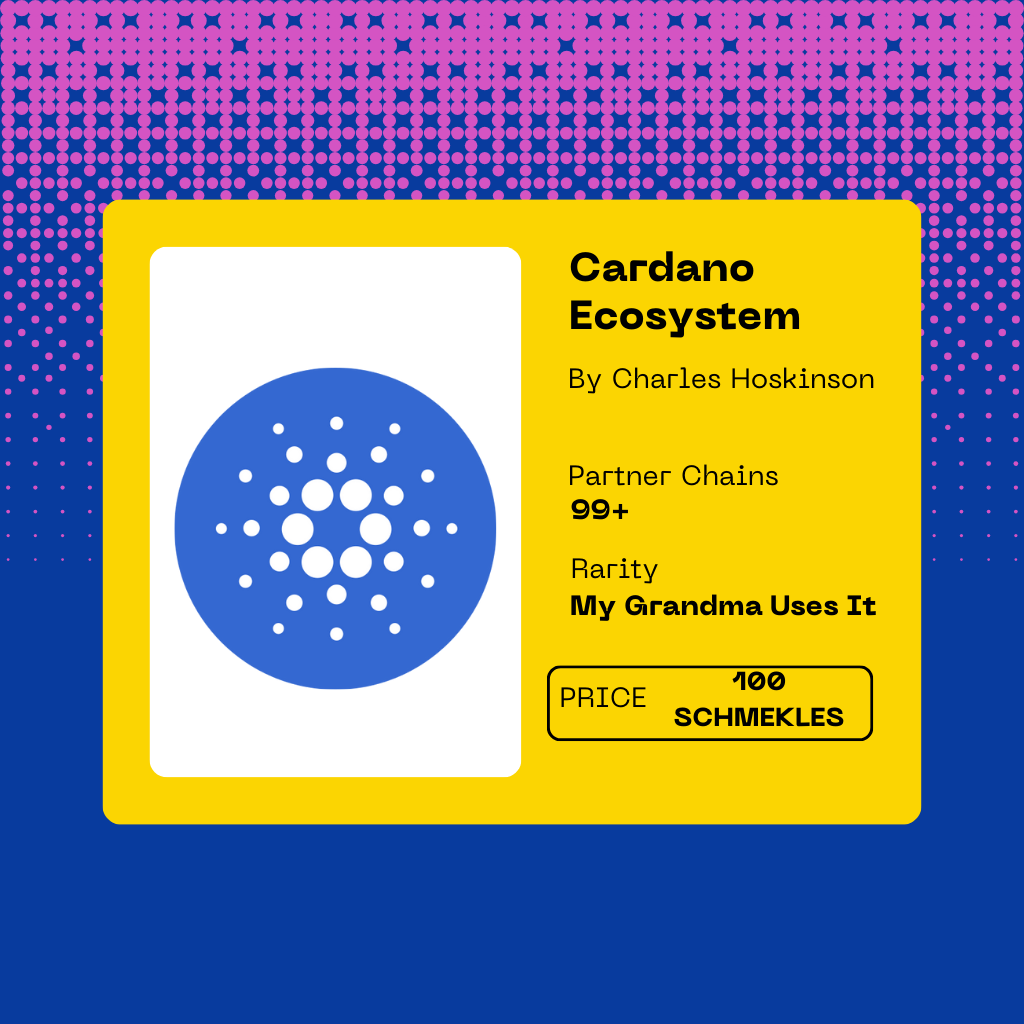Welcome to the 7 new crew members who have joined the frontier expedition since the last letter! If you haven’t subscribed, join the 29 curious explorers in our adventure to understand the frontier of innovation.
Today, we explore Midnight and the Cardano Service layer to understand what it means for the future of the Cardano ecosystem
The Cardano Summit took place over the weekend of November 3rd, 2023, and of the big announcements, the largest was the incoming partner chain ecosystem to Cardano and the first chain to be launched as a partner chain, Midnight.
There have been many questions about both partner chains and Midnight; foremost of all, what does this mean for Cardano?
Today, I'm going to go deep into what exactly partner chains are, what Midnight is, what the future of Cardano looks like in an abundant partner chain world, and what all of it potentially means for the Cardano community.
Partner Chains - Concept
I made the case last month that Cardano will emerge as the leading Layer 1 blockchain in The Cardano Paradigm. In making my case, I briefly stated that one of the design decisions at play to Cardano's benefit is separating the Settlement Layer from the Computation Layer.
This design decision was laid out when Charles Hoskinson wrote Why Cardano in 2017.
Charles makes the point by noting:
"Blockchains are ultimately databases ordering facts and events with guarantees about timestamps and immutability. In the context of money, they order ownership of assets. Adding complex computation by storing and executing programs is an orthogonal concept. Do we want to know how much value went from Alice to Bob, or do we want to get involved in figuring out the whole story behind the transaction and deciding how much to send?"
The origin of this idea helps us understand the path traveled to get to our current destination. Charles seemingly envisioned an ecosystem in which the main blockchain (Cardano) would serve as the secure and decentralized record of guarantee that others can use to ensure their specific use cases receive that same guarantee while functioning according to their particular needs.
This initial vision is still intact, but we are getting more details now that it is closer to blooming. These new details have been elaborated on in Charles Hoskinson's Keynote at the Cardano Summit 2023 and over various interviews and YouTube videos (1, 2, 3, 4).
Of these new details, we discovered the naming conventions are changing. The Cardano Settlement Layer (CSL) is now called the Cardano Assets and Settlement Layer (CASL). The Cardano Computation Layer (CCL) is being referred to as both the Cardano Service Layer and Partner Chains. For the rest of this piece, I will use the new terminology. To avoid confusion, here's the terminology mapping:
Three pieces of technology were revealed as fundamental building blocks for how the future of Cardano will interact with the service layer. These three include multi-resource consensus (Minotaur), using the partner chains token but paying fees with ADA under the hood (Babel Fees), and a dual-token model to split the function of the tokens; all of these technologies are summarized and detailed below.
Minotaur
My understanding of Minotaur is that it provides the capability to execute security through multiple consensus mechanisms, for example, using the security of computing to validate blocks (PoW) and simultaneously using Orobouros PoS! Many technical questions follow, such as what the fee-paying structure will look like, what the tokenomics of that specific partner chain are, and whether blocks are proposed through PoS, PoW, or a hybrid approach. Likely, the service layer chains will have their own consensus mechanism, but Cardano SPOs will quorum sample (select the minimum required amount of transactions) to validate the blocks on the service layer. A nice real-world analogy would be a company that uses both cameras and security guards for security.
These details will likely be based on how that specific chain would like to implement them; nevertheless, it is a powerful use case. Cardano arguably has the most secure and decentralized consensus mechanism in the entire crypto ecosystem, so the fact that this can be outsourced is a large incentive for service layers to attempt to use Cardano PoS.
Babel Fees
Babel fees are a novel way of paying fees in native tokens on the Cardano blockchain without EVER holding ADA. Essentially, stake pool operators act as liquidity providers and cover ADA fee liability owed to a receiving party in a transaction, which would effectively make it so that partner chains that have their token as a native token on the Cardano blockchain will effectively be paying fees in ADA and thereby increasing the value of the Cardano ecosystem.
Dual-Token Model
A dual-token model is one in which one blockchain utilizes two tokens, each performing a different function. Typically, one token offers the utility and fuel for that ecosystem; the other is where the value is derived. The dual-token model can be utilized in many different ways. With ADA at the base of the partner chain ecosystem, I imagine plenty of chains will use ADA in some way. The devil will be in the details here. Likely, the fuel of the service layer will be a token that sits on the service layer. Then, a native token will be issued on ADA, which is responsible for governance, control, and ownership (derived from this live stream). The intention is to have a token of predictable price on the service layer so the service offered is easily managed from a price standpoint, and the ownership of that chain will sit as a Cardano Native Asset.
The back quarter of the Keynote presentation was given by the CEO of Midnight, an incoming blockchain that will be a signature Partner Chain of Cardano.
Midnight was initially announced last year at Scottfest, a Cardano foundation event. Charles revealed that Input Output, Cardano's development branch, had been working on a new blockchain for a while (6 years?). In theory, it's an exciting idea - a privacy blockchain with built-in compliance so that data can technically be revealed regarding regulation, audits, legal battles, etc. At the same time, it raised many questions.
I will walk us through everything we know now and consider Midnight's benefits and drawbacks.
Midnight - The "4th Gen" Partner Chain
Midnight is a regulation-friendly, data-protection blockchain and easy-to-use platform for building blockchain apps. The idea is simple: create a blockchain that protects data but can prove information about that data using zk-Snark (Succinct, non-interactive zero-knowledge arguments of knowledge) technology.
The idea is that Midnight will make building on a blockchain attractive to enterprises that are required by law to keep certain data private. Any business that maintains ID numbers, financial information, health records, and personally identifiable data would now have an option of building on a blockchain while remaining compliant with their respective jurisdiction.
The ethos of expansive adoption is clear with Midnight, and this can even be seen in the decision to use typescript as a programming language, the second largest primary development language for programmers. Here is a good infographic about Midnight's comparison to a typical cloud database and a public blockchain.
As a blockchain, Midnight sounds great! However, a significant question floating around the Cardano community is: What does this mean for Cardano?
While we don't have a whitepaper on Midnight yet, we have some information that provides insight into its interaction with Cardano.
We received information about the dual token structure in a recent whiteboard by Charles. There will be a token on the midnight blockchain that offers predictable pricing and is used as the fuel of its ecosystem. It will be linked to a Cardano native token that is representative of ownership on Midnight. Additionally, Oroborous will likely provide a portion of the consensus mechanism through Minotaur.
Once there are more details about Midnight's exact tokenomics and consensus mechanism, this will become much clearer, but we already have a broad idea of the value it will provide to Cardano.
Stepping back, Midnight is an exciting move for the next era of Cardano. The biggest concerns I see online, such as here, are typically linked to the root worry that Cardano will become irrelevant because of Midnight. If there's one point you take away from this piece, I hope it's what follows: Midnight is not being built with the most secure and decentralized consensus mechanism; it will not have the reliability, self-healing, and decentralization built into it that Cardano has at the core of its protocol.
This is why Midnight is partnering with Cardano: Midnight wants to offer enterprises the capability to build on a privacy-compliant blockchain while still offering the security and reliability afforded to those who use Cardano.
Cardano is effectively outsourcing its benefits to partner chains, thereby accruing the value that comes with that chain's unique service, minotaur model, and tokenomics structure.
I'm excited about Midnight, but more so, I'm excited about this first step toward a partner chain future, where not only are we going to continue to see more dapps coming to Cardano, but we're going to see service layer chains pop up that offer innovative services to the Cardano ecosystem.
So, what does that future look like?
What does this mean for Cardano - Envisioning the Partner Chain Future
Charles Hoskinson likened the service layer to a multiservice architecture in which Cardano Dapps can call upon each service layer chain to provide specific services to the dapps when any system user requests. What does that mean for the future of the Cardano Partner Chains, and what can this potentially look like?
Cardano is arguably the most decentralized cryptocurrency ecosystem in the entire market (arguably Bitcoin, but let's save that convo for a different day). Now, with the assets and settlement layer + service layer architecture, you make the base of this system Cardano, which is the rock of decentralization, security, reliability, and scalability. At this point, the blockchain world opens up to nearly the entire market that has been holding back from using it.
Cardano can effectively start selling its best features to the partner chain ecosystem, which can prioritize other features and still borrow the security, reliability, scalability, etc., from Cardano.
We can imagine how many areas of the market can now utilize some of the great benefits touted about blockchains, such as their secure, decentralized, and reliable infrastructure, and still keep the design choices they need for their specific sector.
We may start to see service layers that make their primary objective when building their blockchain to be REALLY REALLY good at only one seemingly small thing while still being profitable because the one thing they're good at is utilized in mass across the ecosystem.
Devil's Advocate
As always, I will not step away without building a steel man for the other side. So here is a back and forth between me and… well... the devil’s advocate
Devil’s advocate:
Midnight does not need Cardano to function. This statement is technically true. Even if Midnight uses Minotaur and outsources some of its security to Cardano, it can eventually decide to no longer do so. It also doesn't seem to need to use the dual-token model in which the token of value is a Cardano native token. As long as there is a trustless bridge between the chains, people can sell their ADA for Midnight's token if the chain offers more than ADA does.
Dom:
While true, this is an overblown worry. Will Midnight be able to offer you everything and more than Cardano does now? Midnight NEEDS Cardano right now. If it doesn't need it eventually, why would we stop it from removing itself? The ethos of Cardano is and has been freedom maximizing; why would we enforce chains to stay? What if Cardano no longer wants to be associated with that chain? The SPOs can decide to stop providing them security if they please, and this right is granted in both directions, which is the right move. The culture of crypto is being able to move seamlessly between chains, and being a chain that shuts itself out of that is a poor decision.
Devil’s advocate:
What about IOG's focus and the Cardano developer ecosystem, even if that is the case? By creating Midnight and a partner chain framework, Cardano will lose developers, IOG will decide to pivot its focus to a new chain, and Cardano will die a slow, pathetic death. The chain was marketed as a 4th generation chain; if Cardano is 3rd gen, doesn't the marketing imply that Midnight is superior and an "upgraded" version of Cardano? It seems that Midnight will take most of IOG's time, and if it becomes more valuable than Cardano, why would IOG not ditch Cardano for something more worthwhile? Seems inevitable
Dom:
Firstly, Input Output has always been a development organization and has worked on other projects than Cardano since its inception. Regardless, what if this worry does pan out? Remember, Cardano is moving to a place where it will be community-governed, and more than one entity will provide development support. While IOG was and is crucial to the development and support of Cardano, in 10 years, I hope that they are a small piece of an immensely dispersed and extensive ecosystem of development resources on Cardano. IOG spending a relatively large portion of their time on Midnight, for now, is a GREAT idea! Midnight will be the first partner chain to come to Cardano. If Cardano wants to be the cornerstone of an interoperable future, getting as much as possible correct on the first go-around will set an excellent example for other service layers regarding the right tokenomics and security model for building a thriving partner chain. If they can nail it as close to optimal on try #1, we will see a more populated service layer more quickly, bringing value to Cardano.
Above all, the main concern I've seen floating around is that this doesn't bring value to Cardano. It will bring value to Cardano, even if the tokenomics and security bring no value.
Let me explain.
If a blockchain is closely partnered with Cardano and it starts to build its own community of people, it will invite people to look at Cardano and everything built in its ecosystem. I think that the trustless bridge from Cardano to service layers and the capability to seamlessly go from a service layer chain token to ADA or any Cardano native asset is itself, a game changer. Cardano is inviting other blockchains to build with whatever tradeoffs they want and to utilize the great features and community of Cardano. Regardless of the implementation, this will inevitably bring value to the Cardano ecosystem. Similarly, the Cardano community and Ergo have a "shared community" in a sense. If you are in Cardano, you've likely heard of Ergo.
Even if service layers were only to bring more eyes to Cardano (they will do more than that), and those eyes saw what was being built, I'm confident that that alone would drive Cardano's value higher.
As we assess Cardano's stride towards integrating partner chains and launching Midnight, it's important to understand its place in the larger blockchain landscape. This innovative move not only positions Cardano as a forerunner in blockchain interoperability and enterprise solutions but also sets a precedent for the industry's evolution. By pioneering these advancements with Midnight, Cardano is potentially leading a new wave of blockchain technology adoption, inviting a broader range of industries to consider blockchain solutions. This strategic shift could catalyze redefining how businesses, enterprises, and other blockchains interact with Cardano!
Conclusion
As we've journeyed through the intricacies of the partner chain ecosystem, specifically focusing on the pioneering role of Midnight, its becomes clear that Cardano is not just evolving; it's revolutionizing the blockchain space. Introducing partner chains like Midnight underscores a pivotal moment for Cardano, signifying a shift towards a more interconnected and robust blockchain ecosystem.
There has been rhetoric that this will harm Cardano; however, this is the furthest thing from the truth. If Cardano wants to move forward with the rest of crypto, or said another way, if we want to invite the rest of crypto to move forward with us, this now gives everyone the option to plug into the most secure, decentralized, reliable, and inclusive blockchain in the entire ecosystem.
While the road may have some unexpected bumps, this move invites all of the crypto space to work with Cardano, and this is a net win for all involved.
Join the forefront of blockchain innovation by subscribing to our newsletter. Stay updated and delve deeper with us as we explore the top 50 groundbreaking projects on Cardano. Your journey into the future starts here — subscribe now and don't miss out!


